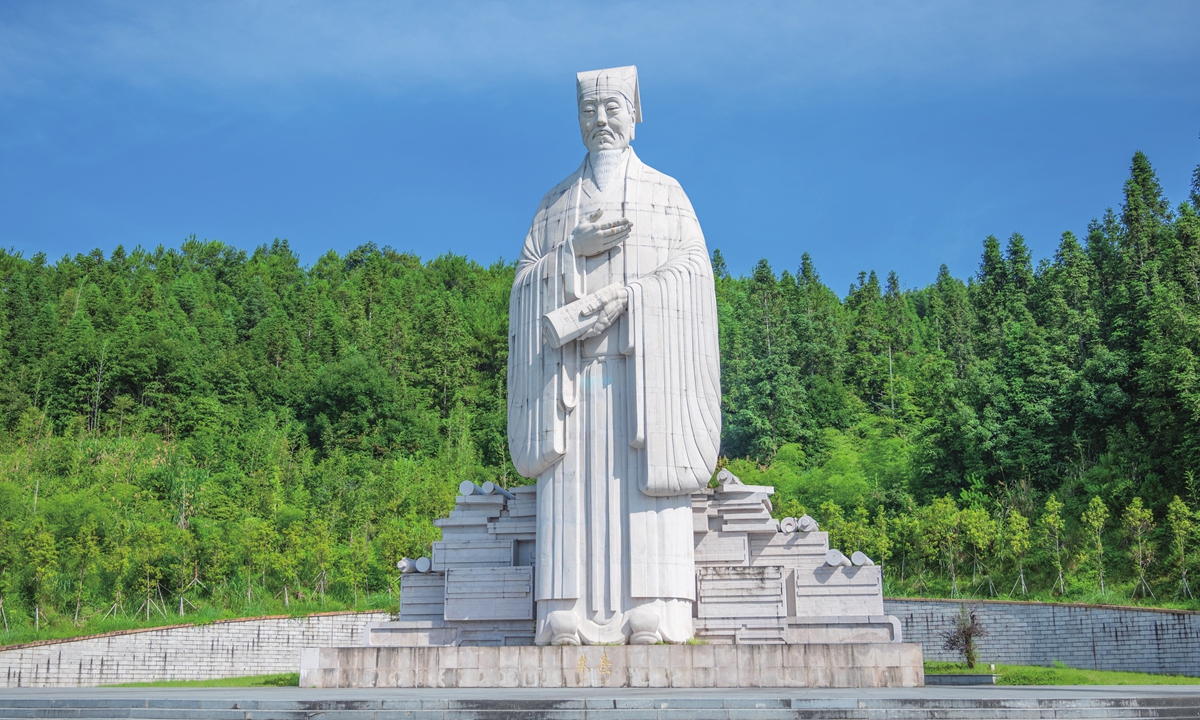ARTS / CULTURE & LEISURE
China’s first National Park Institute established to shore up ecological civilization

Three-River-Source National Park Photo: VCG
In September, a group of university freshmen in China will enroll in a newly established college - the National Park Institute.
As a new academic organ at the Beijing Forestry University, the institute shoulders the mission to assist the development of China's National Park conservation scheme - a systematic protection layout of the country's natural ecosystem that is designated for completion in 2035. The scheme is set to become the "world's largest" of its kind, Li Chunliang, a former vice minister of the State Administration of Forestry and Grasslands, said.
How will formalized education help China achieve this 2035 goal? President of the National Park Institute Xu Jiliang told the Global Times that "making up for the talent shortage" while boosting China's "ecological discourse power" are the institute's aimed contributions.
New base
Inaugurated in May in Beijing, the institute aims to carry out interdisciplinary research on China's ecological civilization construction as the institute's specialty, said Xu.
The institute's faculty consists of 73 full-time teachers with expertise in areas ranging from forestry to soil and water conservation to ecology, and agricultural and forestry economic management.
Xiong Chulong, an ecological expert, told the Global Times that such diverse areas reflect the construction of an ecological civilization is a "comprehensive subject with intricate divisions" that are way more detailed than "mere conservation."
Especially for countries like China, which is rich in natural resources, talents in niche subjects are needed more than ever to cope with the sustainability issues of ecological development, Xiong said.
The national parks established in 2021, for instance, are home to great biodiversity in the form of tigers and tropical rainforests. Even though resource abundance is a blessing, learning to manage them is still work in progress, Xu noted.
He told the Global Times that the construction of national parks is faced with "a structural shortage of talent." The institute will, in future, incorporate management courses and provide students with courses about environmental laws, regulations and policies, Xu revealed.
"The construction and management major at our institute will be the first such major to open for admissions this year," Xu noted.
Aside from in-class trainings, the institute has designed off-campus practices. Students from different disciplines will be designated to laboratories - observation and research stations close to national parks such as the Three-River-Source National Park, Qinghai Province and the Wuyi Mountain National Park. The Wuyi Mountain National Park traverses both Jiangxi and Fujian provinces, and in 1999, it was listed as both a world cultural and a Natural Heritage site for its unique Danxia landscape.
Wu Yuxin, a 28-year-old ecologist, told the Global Times that despite fieldwork being the path inevitably taken by researchers, she is still highly impressed by China's efforts in opening such high-level field research laboratories for young researchers, despite not being a part of the program.
"Such open resources are not only valuable to our research, but will also foster a sense of responsibility among younger scientists for China's ecological preservation," Wu noted and added that China's landscapes are "naturally relics," conveying the series of transformation undergone by the country.
"The institute aims to become a world-class talent training base in the field of national park management and conservation," Xu said, adding that students are expected to become a "high-end think tank" that understands the "characteristics" of national parks in China.

Statue of Zhu Xi, a philosopher of the Southern Song Dynasty (1127-1279) at Wuyi Mountain in East China's Fujian Province Photo: VCG
Chinese plan
Initiated in 2021, the National Park scheme is a national strategy aimed at safeguarding and protect China's key ecological areas.
A total of five national parks were inaugurated in that year, namely the Three-River-Source (Sanjiangyuan) National Park, the Wuyi Mountain National Park, the Giant Panda National Park, the Northeast China Tiger and Leopard National Park, and the Hainan Tropical Rainforest National Park. The protected lands cover an area of 230,000 square kilometers, accounting for nearly 30 percent of the key terrestrial wildlife species found in China.
Situated in the Qinghai-Xizang Plateau interior, the Three-River-Source National Park is an iconic one.
With the plateau ecosystem of glaciers, snowy mountains, high-altitude wetlands and the Gobi deserts and plateau meadows, it is an important ecological security barrier.
Cherished as the country's "national treasure," the Giant Panda National Park in Sichuan Province boasts a total of 1,340 giant pandas and is a hotspot of global biodiversity.
Apart from conservation, such national parks are also places where the public can learn about the ecological environment.
In 2017, a general plan on the establishment of national parks was issued. It set forth its goal of national ownership being shared among all Chinese people and would become the inheritance of generations to come, which provides the public with opportunities to better learn about and practice ecological tourism.
In order to promote the high-quality development of national parks, the National Park Research Institute was jointly founded by the National Forestry and Grassland Administration and the Chinese Academy of Sciences create and bolster cooperative mechanisms between China and overseas countries such as France and Russia.
On July 13, an event themed on the "dialogue between the China-France national park systems" was launched in the Wuyi Mountain National Park.
The event was aimed at facilitating more profound collaborations between the two countries over biodiversity projects, an initiative highlighted by the French President Emmanuel Macron during his April visit to China.


